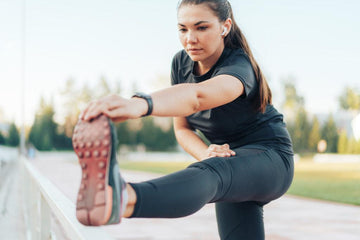Stretching and flexibility play a central role in overall health and well-being. They offer numerous benefits that are important for both everyday life and sporting activities. Here are the main reasons why stretching and flexibility are so important:
Benefits of stretching and flexibility
1. Improved range of motion: Regular stretching increases flexibility in muscles and joints, which improves range of motion and makes everyday tasks easier. This is especially important for older adults as it helps maintain mobility and reduces the risk of falls. Improved range of motion also allows physical activities to be performed more efficiently and with less risk of injury. 2. Injury prevention: Stretching exercises make muscles and tendons more flexible, reducing the risk of strains and sprains. Flexibility helps muscles respond better to stress, reducing the likelihood of sports injuries and other physical ailments. 3. Pain relief: Stretching can relieve muscle tension and relieve pain, especially in the back and neck area. It improves blood circulation and promotes recovery after physical exertion. People who suffer from chronic pain can experience significant relief through regular stretching, as the muscles are more relaxed and less tense. 4. Better posture: By improving flexibility and releasing muscle tension, stretching can promote better posture and prevent postural deformities. Good posture is important to prevent back and neck pain and to improve the efficiency of movements. Stretching exercises that specifically target the muscles of the lower back and shoulders can help maintain an upright and stable posture. 5. Stress relief: Stretching exercises have a relaxing effect and can help reduce stress. They promote a sense of well-being and help reduce mental tension. Stretching releases endorphins, which act as natural mood enhancers and increase general well-being.Types of stretching exercises
- Static stretching: Holding a stretching position for 15-60 seconds to lengthen muscles and improve flexibility. This type of stretching is especially effective after exercise to relax muscles and increase flexibility.
- Dynamic stretching: Controlled, gentle movements that take the muscles through their full range of motion, ideal as a warm-up exercise. Dynamic stretching prepares the muscles and joints for the upcoming physical activity and reduces the risk of injury.
- Ballistic stretching: Fast, bouncing movements to stretch muscles, should be used with caution as it can increase the risk of injury. This method is less recommended for beginners and should only be performed under the guidance of an experienced trainer.
- PNF stretching: combination of stretching and contraction of muscles, often used in physical therapy. This technique is particularly effective in achieving maximum flexibility and is often used in rehabilitation programs.





